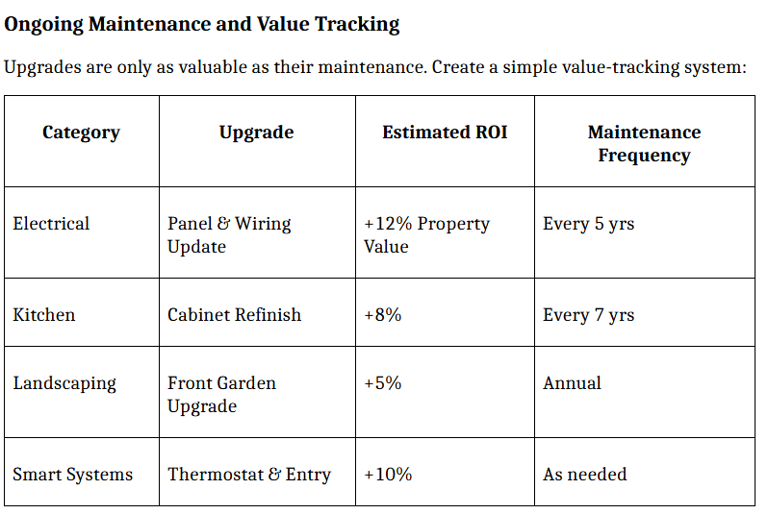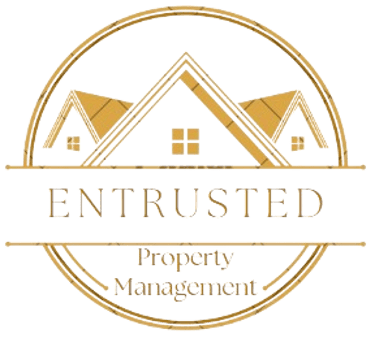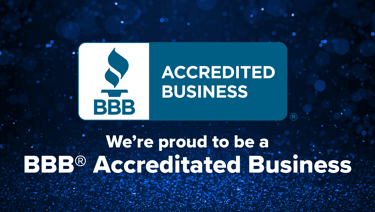An investment property’s value isn’t determined solely by its location—it’s also shaped by how well it evolves. Whether you’re aiming to attract higher-paying tenants, boost resale potential, or improve energy efficiency, updating your property with both strategy and structure can produce measurable returns.
This article explores evidence-backed ways to increase the long-term appeal and equity of your property, blending modern upgrades with cost-effective improvements.
TL;DR
Quick Summary:
● Focus on upgrades that improve function, comfort, and sustainability.
● Enhance curb appeal first—it’s the emotional hook.
● Balance visual design with operational efficiency (lighting, HVAC, wiring).
● Small modernizations (paint, fixtures, smart tech) compound property value faster than most cosmetic renovations.
Modernization with Purpose
Modern updates go beyond aesthetics. Tenants and buyers are drawn to spaces that work as well as they look. Start with functional improvements like energy-efficient systems, modernized wiring, and reliable climate control—each enhancing safety and sustainability.
For instance, updating electrical infrastructure is often overlooked but can dramatically improve value and renter confidence. Explore a possible solution to source durable electrical and lighting components built for long-term reliability.
Strategic Renovation Hierarchy: What to Upgrade First
Every dollar spent should support both immediate livability and resale readiness.
Upgrade Hierarchy:
Structural integrity (foundation, roof, plumbing).
Electrical and HVAC systems.
Kitchen and bathroom functionality.
Lighting and natural ventilation.
Smart home integrations and energy efficiency.
Paint, flooring, and aesthetic details.
Enhancing Curb Appeal
Curb appeal determines perception before a single word in your listing.
● Repaint exterior walls in neutral tones.
● Upgrade entryway lighting for night-time visibility.
● Add low-maintenance greenery.
● Repair or replace pathways and fencing.
Resource: Explore landscape design inspiration at Houzz.
Sustainable Upgrades That Pay for Themselves
Energy-efficient improvements attract eco-conscious tenants and lower long-term operating costs.
● Switch to LED lighting systems.
● Add water-saving fixtures from Ferguson Home.
● Consider solar or smart thermostats from EcoSmart.
Tip: Sustainable retrofits can qualify for local tax credits—check your municipality’s incentive programs at Energy.gov.
Create Functional Flex Spaces
Adaptable layouts add immediate perceived value. Transform spare rooms into multi-purpose workspaces, studios, or compact gyms.
● Use modular furniture from Wayfair.
● Add partition lighting for flexible zoning.
This approach appeals to post-pandemic renters who prioritize home versatility.
Interior Design Refresh: Minimal Cost, Maximum Impact
Aesthetic modernization can be achieved without full renovation.
● Replace cabinet hardware and faucets.
● Add new window treatments.
● Upgrade countertops with affordable quartz overlays.
● Use contrasting accent walls with neutral backdrops.
See how top renovators do it via Apartment Therapy.
Smart Technology Integration
Smart homes now command higher rent premiums. Install:
● Keyless entry systems.
● Smart thermostats.
● Voice-controlled lighting or blinds.
● Leak detection sensors.
Discover integrations at SmartThings.
Safety and Security Enhancements
Safety is both a compliance necessity and a trust signal.
Checklist for Compliance & Security:
● Test smoke/CO detectors.
● Install tamper-resistant outlets.
● Add exterior motion sensors and cameras.
● Secure all window locks.
For compliance standards, refer to NFPA Safety Guidelines.
Feature Highlight — “Value Multiplier Spotlight”
Featured Upgrade: Modern Lighting Ecosystems
Lighting design influences perception, productivity, and comfort. Beyond basic illumination, layered lighting (ambient, task, accent) transforms perceived space size and quality.
Integrating dimmable LEDs and under-cabinet task lights can increase property appeal during walkthroughs and listing photography.
Explore fixtures and smart systems at Lumens.
Ongoing Maintenance and Value Tracking
Upgrades are only as valuable as their maintenance. Create a simple value-tracking system:
For tracking tools, see HomeZada.
How-To: Execute a 30-Day Refresh Plan
Step-by-Step Mini-Roadmap:
Day 1–3: Inspect all systems (electrical, HVAC, plumbing).
Day 4–7: Choose budget-friendly upgrades.
Day 8–15: Schedule contractors and order materials.
Day 16–22: Paint, repair, and refinish.
Day 23–30: Finalize lighting, decor, and smart devices.
Post-Day 30: List property or evaluate rental increase potential.
FAQ
Q1: What’s the fastest way to boost property value without major construction?
A: Paint, lighting upgrades, and hardware replacements deliver immediate ROI.
Q2: Are smart home upgrades worth it for rentals?
A: Yes—renters pay up to 15% more for tech-integrated properties.
Q3: Should I prioritize aesthetic or structural improvements?
A: Always start with structural—cosmetic upgrades depend on it.
Q4: What color schemes improve resale potential?
A: Neutral palettes (warm whites, taupe, gray) appeal to the widest audience.
Glossary
● ROI (Return on Investment): The gain relative to cost of improvement.
● Curb Appeal: Visual first impression of a property’s exterior.
● Smart Home Integration: Use of IoT devices to automate property functions.
● Sustainability Retrofit: Eco-focused upgrades to reduce resource consumption.
● Flex Space: Rooms that serve multiple purposes (e.g., office + guest room).
Refreshing your investment property is about balancing modernization with maintainability. By combining infrastructure upgrades, sustainable design, and smart technology, you position your asset for long-term appreciation and tenant appeal. The goal isn’t just to renovate—it’s to future-proof your property as part of a smarter, value-driven ecosystem.
10 Smart Ways to Refresh and Enhance Your Investment Property for Maximum Appeal and Value




